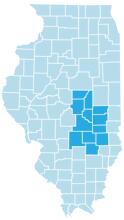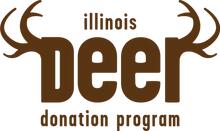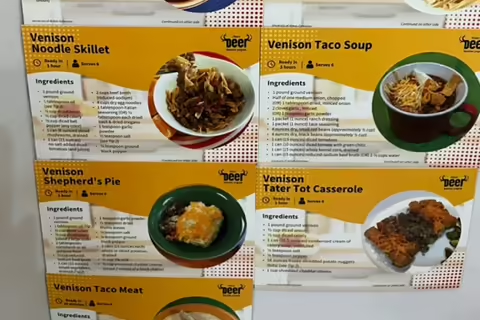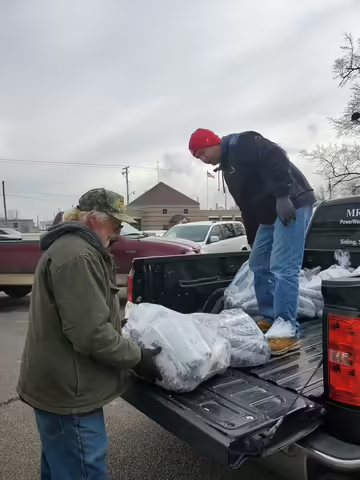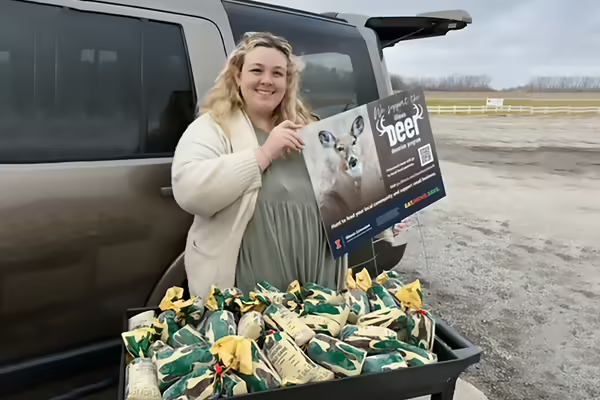
1 in 10 people in Illinois struggle with hunger every day, including 1 in 8 children.
When food prices are high, everyone takes a hit, including food pantries. But now, a local and widespread source of protein – venison – is making its way from the field onto plates providing 24,500 meals so far through the University of Illinois Extension Deer Donation Program. The 12-county pilot program fights food insecurity by connecting hunters in East Central Illinois with meat processors and food pantries.
Extension staff made their first venison delivery to a food pantry in November. Since then, hunters have donated 6,137 pounds of venison, providing more than 24,548 meals.
“Food prices are high, meat prices are high, and pantries are really struggling with getting meat right now. This is an opportunity for hunters to help their communities while doing something they enjoy and supporting local small businesses.”
- Michelle Fombelle, Extension SNAP-Ed Educator
The program is a win-win for everyone – the environment, local economies, and hungry individuals.
Hunters with full freezers can harvest more deer and reduce the population size, preventing deer-vehicle accidents and damage to natural areas and crops. Meat processors get more business and are reimbursed through funds provided by donations and grants. And food pantries can share protein with those in need.
The journey from field to table
Fombelle and other Extension staff have been exploring a deer donation program since 2016. Many surrounding states have had similar programs for years, and Fombelle reached out to understand their process and the challenges they face, such as limited processor capacity and fewer hunters.
“The timing ended up being perfect for this project,” Fombelle said. “We see food insecurity all the time in our communities, but after the height of the pandemic, we all saw the food crisis with increased prices and shortages.”
Of course, none of it would be possible without local meat processors. The six initial processors for the pilot program store and cure the donated whole deer during the busy hunting season before butchering it into 1- to 2-pound frozen packages of ground venison.
Each deer provides about 60 pounds of meat, and processors are reimbursed $100 per deer.
Getting familiar with venison in the kitchen
Extension staff deliver the finished product to pantries where SNAP-Ed staff provide samples, cooking tips, nutritional information, and recipes.
“I had no experience working with venison or wild game, and there are pantry clients in the same situation,” says Extension Nutrition and Wellness educator Caitlin Mellendorf. However, an encouraging 84% of pantry clients surveyed early in the process said they would feed venison to their family.
Mellendorf says that to get people more comfortable with venison, they did a lot of recipe testing. “We found out venison chili might be the go-to for a lot of people, but what are the other things that we can do?”
Some of the favorites so far have been shepherd's pie, tacos, and a classic Midwestern comfort food – tater tot casserole.
Communities feeding communities
The deer donation program has received support from food pantries, hunting organizations such as Whitetails Unlimited Illinois, and the Illinois Association of Meat Processors. It is funded by grants, donations, and the Health Equity Achieved Together project, a multi-disciplinary collaboration with University of Illinois Supplemental Nutrition Assistance Program Education. In November, the Lumpkin Family Foundation provided a $25,000 grant to reimburse meat processors.
The 2022 partnering meat processors are Morgan's Meat Market in Mattoon, Moweaqua Packing Plant in Moweaqua, Blair's Slaughtering & Processing, Inc. and Salt & Strings Butchery in Louisville, Hartrich Meats in Sainte Marie, and Howe Custom Deer Processing in Mode.
Extension staff have raised at least $34,600, which will cover the cost of processing 346 deer and provide an estimated 83,040 meals. With such positive feedback in their first year, Mellendorf and Fombelle are now looking for ways to expand the program to more counties and find consistent funding moving forward.
“I would also love for deer donation to become a common practice,” Fombelle said. “And to one day have hunters go out and harvest a deer specifically to feed their community.”
Learn more about the program, how to donate, and explore venison recipes at go.illinois.edu/DeerDonation.
Photos (top to bottom)
Demi Striglos with the Deer Donation program delivered 50 pounds of venison and shared venison recipes with the Standing Stone/Carpenters Table food pantry in Charleston in early December. Photo credit Standing Stone Community Center.
Twelve East Central Illinois counties are involved in the pilot program: Clay, Coles, Cumberland, DeWitt, Douglas, Effingham, Fayette, Jasper, Macon, Moultrie, Piatt, and Shelby counties.
One crucial part of the program is sharing samples, cooking tips, nutritional information, and recipes with pantry clients who may be unfamiliar with venison. Extension nutrition and wellness and SNAP-Ed staff created recipes and shared materials with food pantries. Photo credit Standing Stone Community Center.
Extension employee Matt Ruholl brought 200 pounds of venison from local meat processors to the Robinson Food Pantry in late December. Photo credit Robinson Food Pantry
Illinois Extension leads public outreach for University of Illinois by translating research into action plans that allow Illinois families, businesses, and community leaders to solve problems, make informed decisions, and adapt to changes and opportunities.
